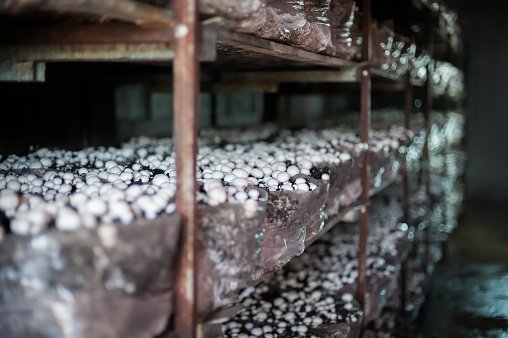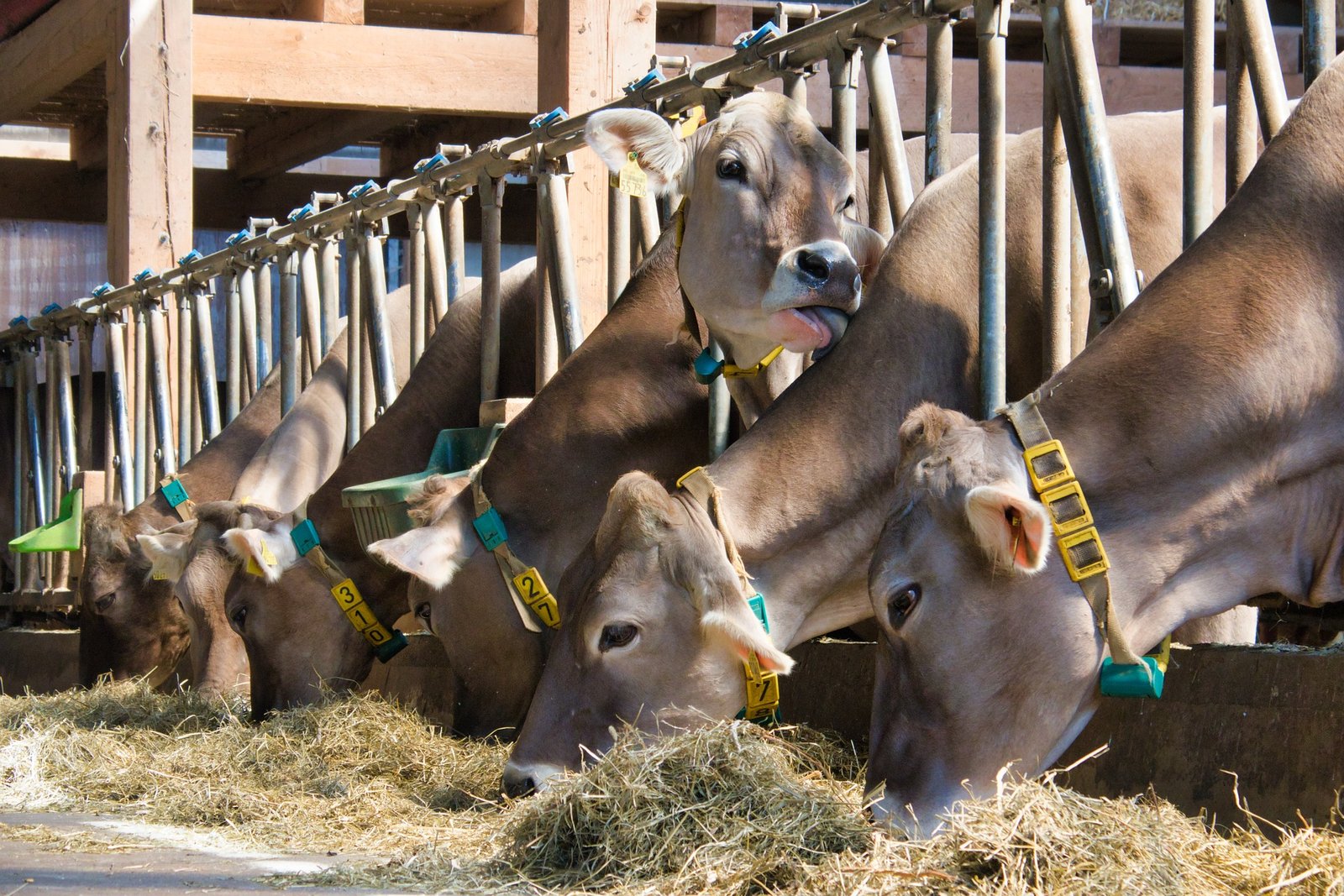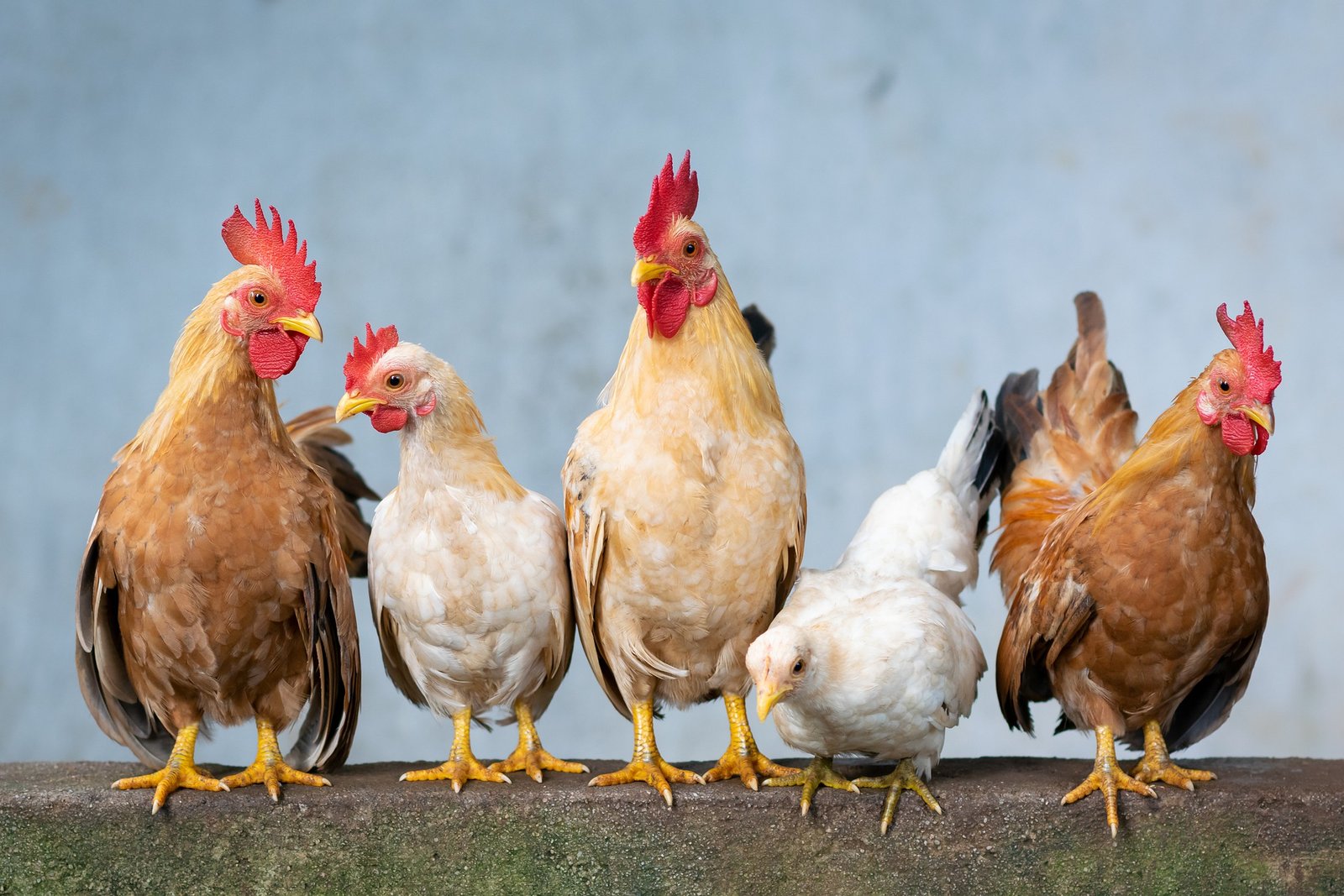The best thing about mushroom cultivation is that it can cultivate different varieties throughout the year. It keeps earning throughout the year.
In the last few years, the trend of farmers has increased rapidly towards mushroom cultivation, mushroom cultivation can become a source of a better income. Just a few things have to be kept in mind, good price of mushroom is available in the market.
Farmers in different states are making good profits from mushroom cultivation, with less space and less time, the cost in cultivation also seems to be very low, while the profits are many times more than the cost. For mushroom cultivation, farmers can take training at any Krishi Vigyan Kendra or Agricultural University.
Mushroom cultivation has been practiced in the world for thousands of years, while the history of mushroom production in India is almost three decades old. India has been witnessing a steady increase in mushroom production for 10-12 years. At present, Himachal Pradesh, Uttarakhand, Punjab, Haryana, Uttar Pradesh, Maharashtra, Tamil Nadu, Karnataka, and Telangana are the major mushroom growing states at the trade level.

In our country mushrooms are used as food and medicine. Mushrooms have special importance all over the world due to their high level of food values like protein, carbohydrates, mineral salts, and vitamins. In India, mushrooms are known as khumb, khumbhi, bhamodi and bunchi etc. Mushrooms are used as the finest nutritious food in the country. Apart from this, mushroom papad, Gym supplementary powder, pickles, biscuits, toast, cookies, noodles, jam (fig mushroom), sauces, soups, kheer, bread, chips, sev, chakli, etc. are made. All these products can also be obtained online.
In order to promote mushroom cultivation, agricultural universities and other training institutions conduct training programs throughout the year to farmers on subjects such as mushroom cultivation method, mushroom seed production technology, mushroom production, and processing, etc. Women are being encouraged more for mushroom cultivation. Under this, the state government is also giving a 50 percent subsidy to the farmers of the state for the cost of mushroom cultivation.
Varieties of mushrooms grown in India are found around 10,000 species of edible mushrooms in the world, out of which 70 species are considered suitable for cultivation. Five types of edible mushrooms are cultivated commercially in the Indian environment Which is described below.
White Button Mushroom
Dhingri (Oyster) Mushroom
Milky Mushroom
Paddy straw Mushroom
Shitake Mushroom
White Button Mushroom
White Button Mushroom In India, the white button mushroom was first cultivated in low temperature places, but nowadays it is being cultivated elsewhere by adopting new techniques. The government is giving a lot of encouragement to the promotion of white button mushroom cultivation. S-11, TM-79, and Horst H-3 strains of mostly white button mushroom are cultivated in India. 22–26 ° C temperature is required for the spread of the fungus trap of button mushrooms. At this temperature, the fungal trap spreads very rapidly. Later, only 14-18°C is suitable for this. It can be grown easily in ventilated rooms, sheds, huts.
Dhingri (Oyster) Mushroom
Dhingri (Oyster) Mushroom can be cultivated throughout the year. For this, the optimum temperature is 20-30 degree centigrade and relative humidity is 70-90 percent. Wheat and paddy straw are used to grow oyster mushrooms. This mushroom is ready in 2.5 to 3 months. It is now being produced all over India. Different species of dhingri mushrooms require different temperatures, so this mushroom can be grown throughout the year. The total cost to grow 10 quintals of mushrooms is Rs 50 thousand. For this, a rack of 100 square feet has to be installed. Currently, the oyster mushroom is sold in the market at the rate of Rs 120 per kg to Rs 1,000 per kg. The price depends on the quality of the product.
Milky Mushroom

Milky mushroom in India is known as the summer mushroom, which is large and attractive in size. It is a tropical mushroom like the Paddy straw mushroom. It started as artificial farming in 1976 in West Bengal. Now, this milky mushroom has gained popularity in states like Karnataka, Tamil Nadu, Kerala, and Andhra Pradesh. The climatic conditions of these states, including Orissa, are suitable for the cultivation of milky mushrooms from March to October. However, due to the preference given by farmers to farmers in some states, it could not be commercialized yet. At present, there are continuous efforts to popularize milky mushrooms in India like Paddy straw mushroom and Shitake mushroom.
Paddy straw Mushroom
Paddy straw mushroom is also known as ‘hot mushroom’, as it is a fast growing mushroom at relatively high temperatures. Its harvest cycle is completed in 3-4 weeks under favorable conditions. The Paddy straw mushroom has a good combination of all qualities such as taste, aroma, fragility, high levels of protein and vitamins, and mineral salts, this is why the mushroom has very high acceptability, and its popularity is nowhere less than the white button mushroom. It is grown in Orissa, West Bengal, Andhra Pradesh, Tamil Nadu, Jharkhand, Chhattisgarh, etc. regions of India. Its growth requires a favorable temperature of 28–35 ° C and relative humidity of 60–70 percent.
Shitake Mushroom
Shitake Mushroom is an excellently edible and important medicinal mushroom. It can be easily grown for commercial and domestic use. It comes second in terms of total mushroom production in the world. Shitake mushroom is a very tasty and texture prized mushroom as compared to white button mushroom. It is rich in high quality protein and vitamins (especially vitamin B). It does not contain fats and sugars so it is considered best for diabetics and heart patients to consume.
White Button Mushroom Production Technology
The time from October to March is considered suitable for the seasonal cultivation of white button mushrooms in northern India. During this time two crops of mushroom can be taken. The optimum temperature for the cultivation of button mushroom should be 15-22 ° C and relative humidity 80-90 percent.
Preparation of shed/hut for mushroom production.
Both permanent and temporary sheds can be used for white button mushroom cultivation. Farmers who are short of funds can use temporary sheds/huts made of bamboo and paddy straw. The shed/hut of 30 Χ22Χ12 (length Χ width Χ height) feet from bamboo and paddy straw costs about 30 thousand rupees, in which 12 to 16 slabs of 4 Χ25 feet size can be prepared for growing mushrooms.

Method of making compost
There are two methods of preparing compost for the cultivation of white button mushroom (Khumb). In both these methods, the compost mixture is rotten on the floor outside, one of which is a miniature method, which is used on large farms. In this short method, after about ten days, the compost mixture is filled in a special type of room, known as a Pasteurization chamber or tunnel. The floor of the bulk pasteurization chamber is forged, in which air is flowed from the bottom by a blower (fan) which passes through all the compost and goes upwards.
Similarly, in compost, the blower blows air continuously for 6-7 days. The production capacity of this compost is about two times that of compost made for a long duration. Most farmers do not have a chamber facility, farmers who cultivate mushrooms on small scale, those farmers adopt the technique of preparing compost by the long method. It is easy and cheap to prepare compost by this method. The process of preparing compost by the long method is completed in three stages, which are as follows.
The method of preparing compost (fertilizer) over a long period of time, to make compost good quality new straw which is not soaked in rain, should be used. Mustard husk can also be used instead of paddy straw or wheat straw, but hen compost must be used along with a mustard straw. The quantity of all materials can be increased in proportion to make more compost. In case of non-availability of farmer manure (calcium ammonium nitrate), the quantity of urea can be increased proportionately. But the amount of nitrogen in fresh or raw compost should be about 1.6-1.7 percent. The following three formulas have been developed to make compost manure by scientific method.
Fig: Compost manure wheat bran 300 kg, wheat bran 30.0 kg, gypsum 30.0 kg, farmer manure (calcium ammonium nitrate) 9.0 kg, urea 3.6 kg, potash 3.0 kg, single super under natural conditions Phosphate 3.0 kg, Sheera (Rala) 5.0 kg.
Wheat straw – 300 kg, poultry manure – 60 kg, wheat bran – 7.5 kg, gypsum – 30 kg, farmer manure (calcium ammonium nitrate) 6 kg, urea – 2 kg, potash – 2.9 kg, single super phosphate – 2.9 Kilogram, molasses – 5 kg.
Mustard husk – 300 kg, poultry manure – 60 kg, wheat bran – 8 kg, gypsum – 20 kg, urea – 4 kg, superphosphate – 2 kg, molasses – 5 kg.
Time to make compost
First of all, the straw is spread on paved floors in an otherwise clean place about one foot thick, folded well with water for two days. Along with putting water on the straw, one should keep turning with the tangli (jelly). After this, compost should be made according to the program given below.
On the first day of 0-day wet straw, spread under a foot thick layer of chemical fertilizers like 6.0 kg farmer manure, 2.4 kg urea, 3.0 kg superphosphate, 3.0 kg muret of potash, and 15 kg wheat bran (bran), well Mix After this, make 5 feet high of straw, 5 feet wide and stacked in length according to convenience. The temperature inside the pile starts increasing only after 24 hours of making a pile of straw. The temperature in the central part of the stack varies from 70 to 80 degrees Celsius and in the outer part, it ranges from 50 to 60 degrees Celsius.
On the 6th day (first reversal) the outer part of the pile dries due to being open in the air so that the manure does not rot well. Manure is reversed to deliver the portion of the compost material to the correct temperature. While turning the pile, keep in mind that the outside part of the pile comes in and the inner part comes out and makes a light splash of water on the dry part of the outside. At the time of this turnover, after adding the remaining 3.0 kg of fertilizer, 1.2 kg of urea, and 15 kg of bran, make the pile again in the shape of 0 days.
On the 10th day (second reversal) separate one foot of the outer part of the compost pile and sprinkle water on it and put it in the middle of the pile while turning. At the time of this turn, mix 5.0 kg of molasses in 10 liters of manure and mix well in the compost, and re-stack it as before.
On the 13th day (third plucking), do the second plucking, just like the second spill of fertilizer. Do make a light splash of water on the dry part outside the compost. The amount of moisture in the compost should neither below nor high. In this turn, 30.0 kg of gypsum should also be added to the compost. The heap of manure should be broken in the same way as it was broken on the second turn on the 10th day, and then the same size should be made again.
On the 16th day (fourth turn), the manure pile should be turned again and make the same pile as before and keep the proper amount of moisture in the compost.
On the 19th day (fifth turn), on the 22nd day (sixth turn), and on the 25th day (seventh turn),
In the fifth, sixth, and seventh turn, like the fourth turn, turn the pile of manure again and make the same pile as before and add moisture. Be sure to maintain proper volume.
28th days The fertilizer is tested for ammonia and moisture three days after the seventh turn on the 28th. If the fertilizer does not smell of ammonia gas and the moisture content is also appropriate, then the manure is considered ready for sowing. The heap should be opened to cool before sowing. If the smell of ammonia gas is left in the compost under any special condition, then it can be reversed every third day. There is a possibility of containing ammonia gas in hen beet manure. Ammonia gas is harmful to mushroom fungi or seeds.
When the compost is ready, try to squeeze a little manure with your fist. If the droplets of water come out between the fingers, then it is understandable that the amount of moisture in the compost is sufficient. If the water falls between the fingers like a razor instead of droplets, then the amount of water is more than the requirement. In such a situation, the manure should be opened and ventilated.
Identification of Good Mushroom Compost
Compost manure appears dark brown.
The moisture content in the compost should be 60-65 percent.
The amount of nitrogen in the compost should be about 1.75-2.25 percent.
Compost should be completely odorless of ammonia gas.
Compost should be free of pests and germs.
The pH value of the compost should be between 7.2-7.8.
From here you can take spawn (mushroom seed).
The seeds used in mushroom cultivation are called spawn. To get a high yield of mushroom, the seeds should be pure and of good quality. Spawns produced from the culture of selected mushroom strains are produced in an environment without bacteria. The highest yielding cultivation can be prepared from other locations and can prepare to spawn in the laboratory. The maximum amount of spawn is 0.5–0.75 percent of the fresh weight of compost. In low-level compost, the dispersion of mycelium is less. To get good quality seeds, booking should be done at least one month in advance in the Department of Plant Pathology of the University, so that seeds can be prepared and given to you on time. Advance variety spawns can be obtained from the following laboratories as per convenience.
Directorate of mushroom Research, Solan, Himachal Pradesh, Dr. Yashwant Singh Parmar University of Horticulture and Forestry, Solan (Himachal Pradesh), Department of Plant Pathology, Haryana Agricultural University, Hisar (Haryana), Directorate of Horticulture, Mushroom Spawn Laboratory, Kohima, Department of Agriculture, Manipur, Imphal, Government Spawn Production Laboratory, Horticulture Complex, Chauni Kalan, Hoshiarpur (Punjab), Science Committee, Udaipur (Rajasthan), Regional Research Laboratory, CSIR, Srinagar (J&K), Department of Agriculture, Lalmandi, Srinagar (Jammu & Kashmir), Department of Plant Pathology, Jawaharlal Nehru Agricultural University, Jabalpur (Madhya Pradesh), Department of Plant Pathology, Assam Agricultural University, Jorhat (Assam), Regional Horticultural Research Centre, Dhaulakuan (Himachal Pradesh), Himachal Pradesh Agricultural University Laboratory, Palampur (Himachal Pradesh), besides these government spawn production centres, many private individuals are also involved in mushroom seed production which are Solan, Hisar, Sonipat, Kurukshetra (Haryana), Delhi, Patna (Bihar), Mumbai (Maharashtra) etc. are located in places.
Mushroom spawning
After placing polythene seats on the slabs or beds in the shed / hut prepared for mushroom spawning mushroom production, then lay a layer of compost 6-8 inches thick, followed by mushroom seeds / on top of the compost. Mix the spawn. 500 to 750 grams of seed is sufficient for sowing 100 kg of compost fertilizer. Polythene should be covered from the seat after sowing spawn.
Precautions in keeping seeds
Precautions to keep spawning trap seed of spawns installed over the compost, the mushroom seed dies at a temperature of 40 ° C or more in 48 hours, and the smell of rotting in the seeds also begins. Seeds should be brought at night during summertime. If possible, place ice chunks with seed bottles or envelopes in a box made of thermocole and bring them from one place to another. Loss of high temperature can be avoided if an air-conditioned vehicle is used to move the seeds from one place to another.
Storage of Seeds
Freshly made the seed of mushroom spreads quickly in compost and yields increase as mushroom starts coming out early. However, if it becomes necessary to store the seeds due to any situation, then the mushroom seeds can be saved from spoilage by storing them in the refrigerator for 15-20 days.
Casing Mixture
The casing mixture is any material that is soon absorbed by water and released slowly and is brittle, considered suitable for the casing. Research from Chaudhary Charan Singh Haryana Agricultural University, Hisar has shown that the mixture of rice peel ash (boiler ash) and soil prepared in the ratio of 1: 1 weight is a good quality casing. To desiccate the casing mixture, 2-3% formaline solution should be dampened and covered with a polythene seat for 3-4 days. By removing the polythene seat from the casing mixture it should be inverted, which removes the smell of formalin. When the spawning net of spawning is completely installed on top of the compost, a 1.0-1.5 inch thick layer of casings is laid over it.
Casing helps in the vegetative growth of mushrooms. The appropriate amount of moisture remains in the compost after casing. In the case of non-casing, mushrooms are released in very small amounts resulting in economic loss.
Conduction of Air
It is necessary to give pure air once or twice while spreading fungus in compost, and the amount of carbon dioxide should not be more than 2 percent. The amount of carbon dioxide required to form a pinhead should not exceed 0.08 percent and it should not exceed 0.08–0.1 percent at the time of mushroom discharge. This means that the air should be well operated at the time of pin formation and later. In addition to good compost for the cultivation of white button mushroom, if good management of the crop is done, more production of good quality can be taken.
Fruiting and plucking
After 12-15 days of fruiting and plating the layer of casings, small buds of mushroom appear on the compost which develops in 4-5 days and turns into small white button mushroom. When the size of these white button mushrooms is 4-5 centimeters, it should be twisted and broken, considering them mature. The white button mushroom should be used soon after plucking because it begins to deteriorate soon. The most important thing is that about 5.00 kg of white button mushroom can be obtained from compost manure made from 10.00 kg of dried straw used.
Read More:-
How to Start a Dairy Farming Business? Full Information on Dairy Farming
LemonGrass Cultivation, varieties, and benefits
















[…] Read More:- Mushroom Cultivation in India, Varieties and Benefits […]